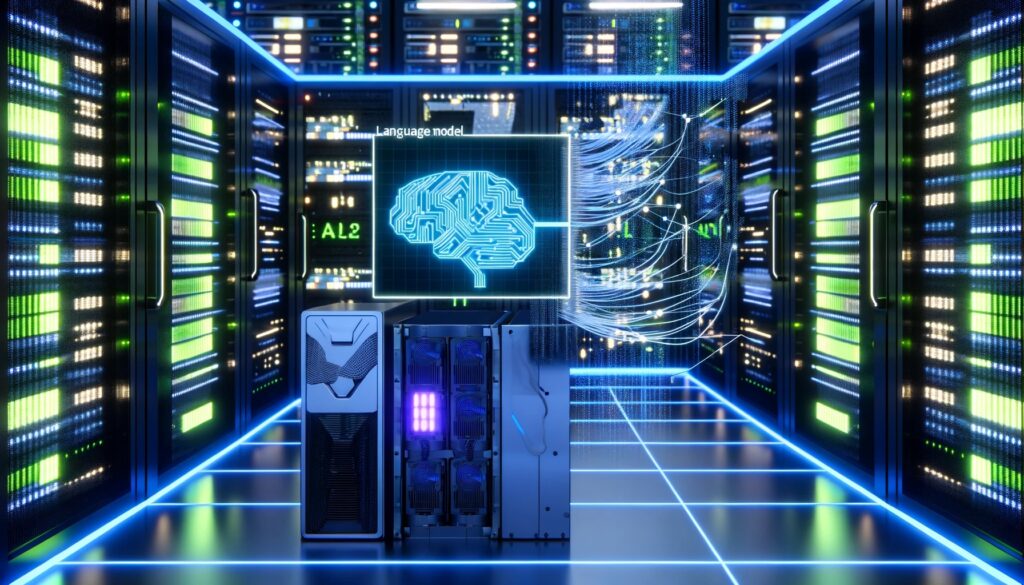As technology continues to evolve, the demand for high-performance computing (HPC) solutions grows exponentially across various sectors. Industries like artificial intelligence (AI), machine learning (ML), data analytics, and scientific research require computational power far beyond what standard processors can offer. Two primary options that enterprises consider today are GPU clusters and traditional computing in Bare Metal as a Service (BMaaS). Both options have their distinct advantages and use cases, but determining the right approach depends on specific workload requirements, performance expectations, and resource needs.
This article will explore the fundamental differences between GPU clusters and traditional computing within BMaaS and help understand the best application of each in high-performance environments.
Understanding GPU Clusters and Traditional Computing
Before diving into a comparison, it’s essential to clarify the nature of each approach.
- GPU Clusters: A GPU cluster is a collection of interconnected Graphics Processing Units (GPUs) working together to execute tasks in parallel. GPUs are designed for highly parallel tasks and can process thousands of threads simultaneously, making them ideal for complex mathematical computations, deep learning, rendering, and AI model training.
- Traditional Computing: Traditional computing in BMaaS refers to Central Processing Units (CPUs), which handle a wide range of computing tasks. CPUs are designed for general-purpose computing, offering strong single-threaded performance, making them ideal for workloads that require complex instructions but do not benefit from massive parallelism.
- Bare Metal as a Service (BMaaS): BMaaS provides organizations with dedicated, physical servers (bare metal) that are not shared with other tenants. This gives users full control over the hardware and eliminates the performance overhead associated with virtualization, offering the highest level of performance, security, and customization.
1. Performance Capabilities
The performance difference between GPU clusters and traditional computing is stark, particularly when considering the nature of the workloads.
- GPU Clusters: GPUs excel at tasks requiring extensive parallelism, such as matrix operations, vector calculations, and deep learning training. A single GPU can handle thousands of concurrent threads, which makes it highly efficient for parallel workloads like AI, ML, and scientific simulations. GPU clusters can distribute large, complex tasks across multiple GPUs, dramatically accelerating processing times.
- Traditional Computing: CPUs are built for general-purpose tasks and are strong in scenarios where sequential processing is key. CPUs typically have fewer cores but offer greater per-core performance, which is critical for tasks like database management, web hosting, and applications that require complex instruction sets. However, they are less suited for workloads that demand massive parallel processing, making them slower for tasks like training neural networks.
In BMaaS, both GPUs and CPUs can leverage the full power of the underlying hardware without the overhead of virtualization, but GPU clusters offer a clear advantage in scenarios where parallel processing and mathematical computations are the primary focus.
2. Scalability
Scalability is another critical factor when comparing GPU clusters and traditional computing in BMaaS.
- GPU Clusters: One of the greatest strengths of GPU clusters is their ability to scale. By adding more GPUs to the cluster, users can significantly increase computational power, enabling them to handle massive datasets or train complex models faster. This scalability is crucial for industries like AI, where deep learning models require more resources as they grow in complexity.
- Traditional Computing: Traditional computing can scale in terms of adding more CPU cores or servers to the infrastructure. However, this scaling is less efficient for tasks that require parallel processing, as CPUs are not optimized for thousands of concurrent tasks. While adding more CPUs can improve performance for certain workloads, it becomes costlier and less efficient for highly parallel tasks compared to scaling with GPUs.
In a BMaaS model, where users pay for dedicated hardware, GPU clusters offer better scalability for parallel-intensive workloads, while CPUs may be more appropriate for transactional and sequential tasks.
3. Workload Suitability
Different workloads demand different types of computing power, and the suitability of GPU clusters versus traditional computing varies accordingly.
- GPU Clusters: Best suited for computationally heavy workloads such as deep learning, AI training, image rendering, scientific simulations, and large-scale data processing. In these scenarios, the ability to process thousands of threads concurrently is vital, and GPU clusters excel due to their massive parallelism.
- Traditional Computing: Ideal for workloads that require sequential task execution or general-purpose computing. Examples include database management, web hosting, content delivery networks (CDNs), and applications with complex logic but relatively lower parallel computation requirements. Traditional CPUs are optimized for single-threaded tasks where high per-core performance is needed.
Choosing between GPU clusters and traditional computing in BMaaS depends largely on the type of workload being executed. GPU clusters are unmatched for AI, ML, and scientific tasks, while traditional CPUs remain the best choice for transactional workloads or general-purpose applications.
4. Cost Efficiency
Cost efficiency is a crucial consideration when selecting hardware, particularly in a BMaaS model where organizations are billed for dedicated server resources.
- GPU Clusters: While more expensive upfront due to the high cost of GPUs, clusters provide unparalleled performance for parallel processing tasks. The high efficiency of GPUs for specific workloads (like AI and machine learning) means that, in many cases, tasks that would take days or weeks on a CPU can be completed in hours or days on a GPU cluster. This translates into significant time savings and, consequently, cost savings for tasks that require rapid computation.
- Traditional Computing: Typically, traditional CPU-based servers are less expensive to set up and run, especially for workloads that don’t require massive parallelism. For applications that don’t benefit from GPU acceleration, investing in GPUs would be an unnecessary expense, making CPUs the more cost-effective choice.
Conclusion
The choice between GPU clusters and traditional computing in Bare Metal as a Service boils down to understanding the nature of the workload. GPU clusters are the clear choice for tasks requiring massive parallelism, such as deep learning, AI, and complex simulations, offering superior performance and scalability. Conversely, traditional CPUs shine in general-purpose, sequential tasks and remain cost-effective for less parallel-intensive applications.
In an era where HPC is driving innovation, the ability to select the right hardware configuration is critical to achieving both performance and cost efficiency. Whether an organization chooses GPU clusters or traditional computing, the flexibility and power of Bare Metal as a Service will continue to be a pivotal enabler for modern computational workloads.





More Stories
The Science Behind Off-Axial Aspherics: Benefits and Manufacturing Techniques
How to Build an E-E-A-T Strategy for Local SEO
Why should you encrypt your messages when communicating with colleagues?